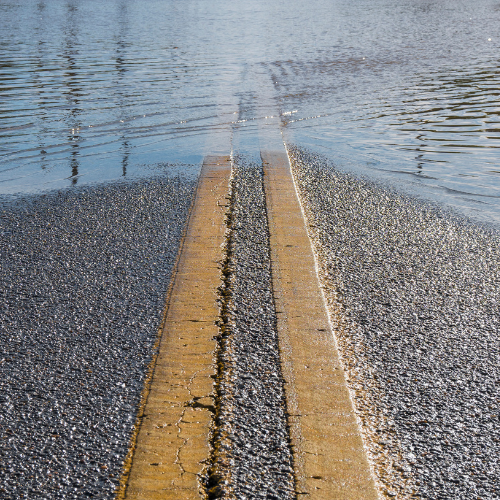Increased Flooding and What We Can Do.
I’ve addressed it all in my own short time in this region: standing water after a “sort of” wet monsoon, flash flooding from tropical storms, and basement flooding.
We have to ask, why are we flooding?
There are a few reasons, but perception is the first thing to consider. We are hyper-aware of climate issues. More aware than the last time we saw such a wet season. We pay little memory to past weather events because we don’t think much of them like we do now.
The climate discussion puts these weather events at the top of our minds, which, for better or for worse, brings this to the attention of residents. But we must be clear about what is happening and what we can do.
Certain aspects of weather are cyclical. The last time we saw a similar wet summer in this region with that storm frequency was about nine years ago. (Not the last time we’ve seen flooding- but frequent, heavy rain events over several weeks). Flash floods or tropical storm floods like those caused by tropical storm Ida are relatively common during hurricane season. But a series of severe rainfalls like this summer saturate the clay like soils we have here so that subsequent events- even smaller ones- yield more standing water than usual.
Nine years ago, some things were very different when we had a similar weather pattern. Here are three variables that have exacerbated flooding with time and may only get worse if not managed:
Storm-water infrastructure was younger.
A few years back, our town was grappling with the priority of a new municipal building. Some people pointed to the need of new road surfacing as a priority instead. I recall far less demand for stormwater updates. The fact is, stormwater is forgotten about until surfaces are overburdened and failing. Resource constraints provide for only so many municipal projects at a time. When the muni complex was up for replacement, no one had the foresight for the pending infrastructure failures. The seasons in the last eight years were dryer, but the pipes below ground were still aging away.
The township had a lot more trees.
No one ever seems to consider this a “climate change” aspect, but our effect on trees, thence flooding, is a human-caused consequence. According to the most recent Natural Resources Inventory (a township-specific environmental document), our township loses an acre of trees annually. So nine acres of trees have been lost since the last major wet summer. It is the consequence of clearcutting lots for development and removing trees from residents’ properties without replacement. Add to that the losses from the Emerald Ash Borer infestation – which is expected to eradicate the Emerald Ash trees. An acre of trees provides for an immeasurable amount of natural groundwater mitigation, and we have slowly chipped away at that resource.
The Passaic River had less junk in it.
With the main part of the river unable to take on water surges during storms, it burdens tributaries and creeks, which then burden the developments they serve for runoff.
The township as well as residents have work to do to fix it. This administration has taken on the task of funding a revamp of storm-water infrastructure but if you haven’t been down Park Ave this summer, you may not be aware of what an undertaking this involves. That particular summer-long project is just one water main replacement. Storm-water systems are township wide and much more complex. Additionally, the Mayor recently set out to dredge the river but needs other towns’ attention to get this done.
The township needs to invest in infrastructure, while residents need to take advantage of free tree plantings and consider good stewardship towards their trees to protect this resource. The township recently invested in a lobbyist firm to provide Berkeley Heights with a “personalized” activist in Trenton. This service has already provided our town with $2 million for storm-water and sewage system upgrades; another aging system that will soon also see more significant burdens cast upon it.




